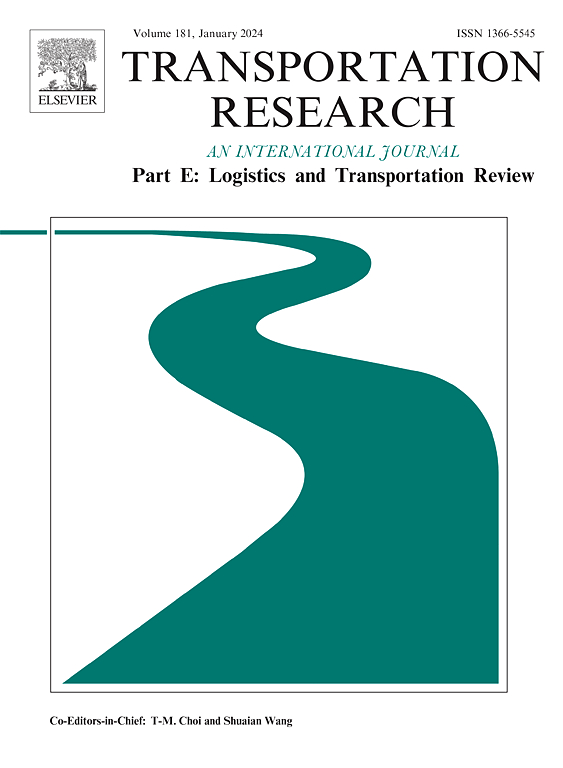Reconcile autonomous garbage truck and workload for multiple-period waste pickup schedule considering service frequency for industry 5.0
IF 8.3
1区 工程技术
Q1 ECONOMICS
Transportation Research Part E-Logistics and Transportation Review
Pub Date : 2025-05-21
DOI:10.1016/j.tre.2025.104171
引用次数: 0
Abstract
The autonomous garbage truck armed with garbage collector robots for unloading/loading waste will be essential for municipal waste collection in Industry 5.0. Due to the juvenility of garbage collector robots, it is significant to reconcile autonomous garbage trucks and sanitation workers in municipal waste management in transition to Industry 5.0. This paper focuses on reconciling the multiple-period waste collection route design of autonomous garbage trucks and the workload of sanitation workers considering the service frequency constraint and introduces a Period Statistics-based Waste Collection Routing Problem (PS-WCRP). We formulate the problem as multi-objective programming and propose an adaptive large neighborhood search-based hierarchical framework to solve it. The experimental results indicate its excellent performance by comparison with commercial tools, Gurobi and other heuristics. Furthermore, the ablation experiment analysis reveals the rationality and effectiveness of our solution framework. Finally, reconciliation is achieved, as proven by the analysis of sanitation workers’ workload.
考虑到工业5.0的服务频率,协调自动垃圾车和多周期垃圾收集计划的工作量
在工业5.0时代,配备垃圾收集机器人的自动垃圾车将成为城市垃圾收集的关键。由于垃圾收集机器人尚不成熟,在向工业5.0过渡的过程中,在城市垃圾管理中协调自动垃圾车和环卫工人具有重要意义。针对自动垃圾车多周期垃圾收集路径设计与环卫工人工作量之间的协调问题,提出了基于周期统计的垃圾收集路径问题(PS-WCRP)。我们将该问题表述为多目标规划,并提出了一种基于自适应大邻域搜索的分层框架来解决该问题。通过与商业工具、Gurobi等启发式算法的比较,实验结果表明该方法具有良好的性能。此外,烧蚀实验分析表明了该解决框架的合理性和有效性。最后,正如环卫工人工作量分析所证明的那样,实现了和解。
本文章由计算机程序翻译,如有差异,请以英文原文为准。
求助全文
约1分钟内获得全文
求助全文
来源期刊
CiteScore
16.20
自引率
16.00%
发文量
285
审稿时长
62 days
期刊介绍:
Transportation Research Part E: Logistics and Transportation Review is a reputable journal that publishes high-quality articles covering a wide range of topics in the field of logistics and transportation research. The journal welcomes submissions on various subjects, including transport economics, transport infrastructure and investment appraisal, evaluation of public policies related to transportation, empirical and analytical studies of logistics management practices and performance, logistics and operations models, and logistics and supply chain management.
Part E aims to provide informative and well-researched articles that contribute to the understanding and advancement of the field. The content of the journal is complementary to other prestigious journals in transportation research, such as Transportation Research Part A: Policy and Practice, Part B: Methodological, Part C: Emerging Technologies, Part D: Transport and Environment, and Part F: Traffic Psychology and Behaviour. Together, these journals form a comprehensive and cohesive reference for current research in transportation science.

 求助内容:
求助内容: 应助结果提醒方式:
应助结果提醒方式:


